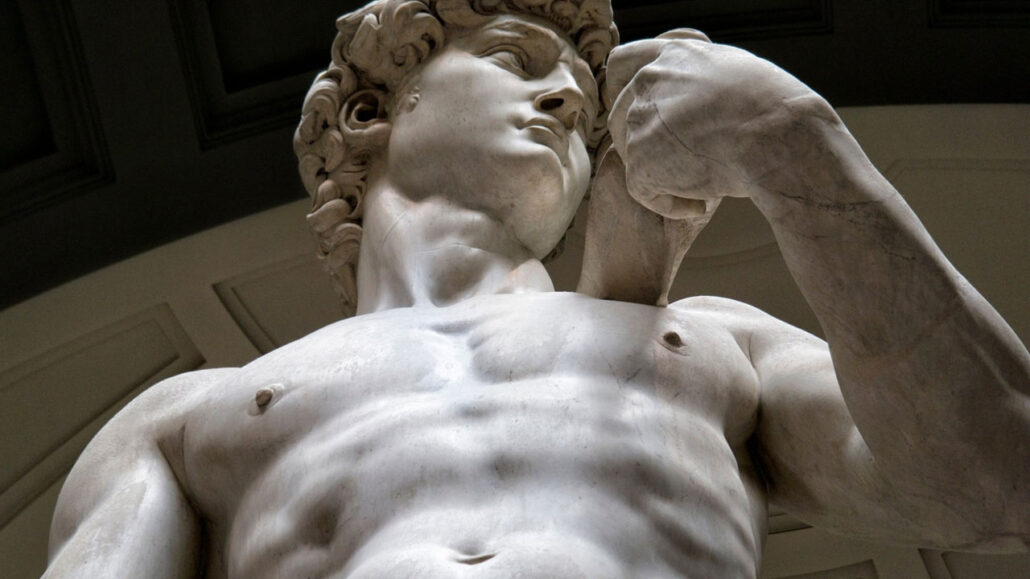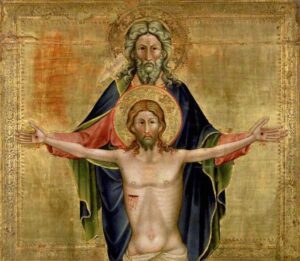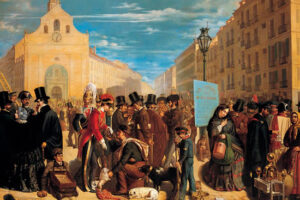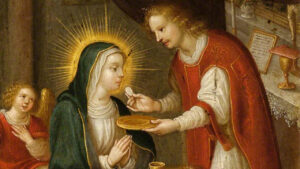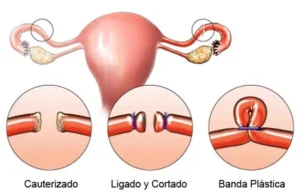Question:
I am a photographer and I am wondering if it is possible (or morally appropriate) to photograph a naked person in a natural pose (i.e. not provocative) for purely artistic purposes. I have never done such kind of photography, but I want to know if I could proceed with a clear conscience in case I would do it. Please answer my concerns if possible.
Response:
This is an inquiry that requires a comprehensive answer in order to be substantiated.
Nudity Itself
Nudity in itself is not something immoral; God, after having formed the human body, judged it to be very good (Gen 1:31). Where does the possible disorder come from? We have it expressed in the two successive attitudes that we read in Genesis:
a) And the man and his wife were both naked, and were not ashamed. (Gen 2:25)
b) Then the eyes of both were opened, and they knew that they were naked; and they sewed fig leaves together and made loincloths for themselves. (Gen 3:7). He said, “I heard the sound of you in the garden, and I was afraid, because I was naked; and I hid myself.” He said, “Who told you that you were naked?(Gen 3:10-11b)
The appearance of shame shows a change of state in man and woman. The change comes because of original sin that introduced a disorder in human activity. The disorder that remains as a consequence of sin is called ‘concupiscence’. Disordered concupiscence alters the order and nature of things; on the level of sensuality and sexuality it orders the body to selfish venereal pleasure, altering the purpose of sexuality which is mutual spousal complementarity (realizing the double dimension of sexuality: unitive and procreative). Concupiscence, then, turns the sexual tendency from being ‘full gift of love’ (only possible in the conjugal context) to ‘selfish possession’, turning the other (the body of the other) into an object of use instead of being a term of gift.
The problem with nudity in the present state of human nature (wounded by sin) is that it can become an occasion for what is called the ‘lustful gaze’: the gaze that rests on the body as an object of desire, integrating it into the disordered concupiscence of the heart. The double evil that follows is, on the one hand, the sin of the person who looks at the body by lowering it to an object of pleasure; and the loss of dignity in the person who exposes himself to being looked at as an object.
Within marriage, on the other hand, it keeps its original dimension. There the naked body, by manifesting itself as it is, that is, by visibly showing sexual complementarity, becomes a word (every gesture is a word). By showing themselves, they tell each other that they give themselves, that they complement each other, that the two are but one, as their bodies (two halves of a single being) show. In this sphere, having been sealed by the marriage pact, this dimension keeps all its truth.
Hence, the veiling of the body (the function of clothing) constitutes a silencing of the subject of sexuality before those to whom sexuality should not be spoken or offered.
The Artistic Manifestation of Nudity
John Paul II said in his Catechesis of May 6, 1981:
“In the course of the various eras, beginning from antiquity—and above all in the great period of Greek classical art—there are works of art whose subject is the human body in its nakedness. The contemplation of this makes it possible to concentrate, in a way, on the whole truth of man, on the dignity and the beauty—also the “suprasensual” beauty—of his masculinity and femininity. These works bear within them, almost hidden, an element of sublimation. This leads the viewer, through the body, to the whole personal mystery of man. In contact with these works, where we do not feel drawn by their content to “looking lustfully,” which the Sermon on the Mount speaks about, we learn in a way that nuptial meaning of the body which corresponds to, and is the measure of, “purity of heart.” But there are also works of art, and perhaps even more often reproductions, which arouse objection in the sphere of man’s personal sensitivity—not because of their object, since the human body in itself always has its inalienable dignity—but because of the quality or way of its reproduction, portrayal or artistic representation. The various coefficients of the work or the reproduction can be decisive with regard to that way and that quality, as well as multiple circumstances, often more of a technical nature than an artistic one.
It is well known that through all these elements the fundamental intentionality of the work of art or of the product of the respective media becomes, in a way, accessible to the viewer, as to the listener or the reader. If our personal sensitivity reacts with objection and disapproval, it is because in that fundamental intentionality, together with the concretizing of man and his body, we discover as indispensable for the work of art or its reproduction, his simultaneous reduction to the level of an object. He becomes an object of “enjoyment,” intended for the satisfaction of concupiscence itself. This is contrary to the dignity of man also in the intentional order of art and reproduction.”
As can be seen, the problem is not in the first instance the ‘material object’ represented because the body itself is something good. It is a problem that goes to the level of the ‘moral object’. That object (the nude or semi-nude body) is captured, or represented or reproduced (this term ‘reproduce’ is used by John Paul II to express the art of photography as opposed to painting and sculpture which rather represents, interprets; as can be seen in the Catechesis of April 15, 1981) with an intentionality infused by the ‘artist’ through the qualities or ways in which he reproduces it (postures, approaches, gestures, realism, liveliness, etc.).
“Invited by the artist to look at his work, the viewer communicates not only with the concretizing, and so, in a sense, with a new “materializing” of the model or of the material. But at the same time he communicates with the truth of the object which the author, in his artistic “materializing,” has succeeded in expressing with his own specific media.” (St. John Paul II Catechesis of May 6, 1981).
Hence:
a) When this intentionality implies a reduction of the body to the rank of an object of enjoyment, destined to the satisfaction of lust, the image violates the dignity of the person (of the one who is represented and of the one who looks at it) and is inserted in the ‘lustful look’, in the ‘pornovision’ (Catechesis of April 29, 1981) that Jesus Christ equates with adultery of the heart: “But I say to you that everyone who looks at a woman with lust has already committed adultery with her in his heart” (Mt 5:28).
b) When the work has that element of ‘sublimation’ that includes the quality of not inducing ‘looking to desire’, it does not seem to offer moral objections.
Certainly, there is a great difference between the arts that ‘represent’ (painting, sculpture) and those that ‘reproduce’ (photography, cinema). Paintings and sculptures have the quality of being able to ‘sublimate’, ‘transfigure’ the body. In some way they can spiritualize it and make the aesthetic aspect, the beauty, the truth of the human body prevail in the representation (and therefore, in the viewer’s gaze). Photography and cinema ‘reproduce’ the living body and are therefore more immediately linked to the experience of man (an experience wounded by concupiscence).
Let us also remember that the problems lie not only in the greater nudity of the work but also in the capacity to insinuate a message on the imagination.
Finally, I recall that St. Paul VI’s encyclical Humanae vitae (cf. no. 22) stresses the need to ‘create a climate favorable to education in chastity’.
Art and Morality
In these limits that morality places on artistic representation, some see an undue invasion of morals in the proper terrain of art. In this respect I must recall that “the beautiful and the artistic, as a human work and intended for human use, fall squarely within the orbit of moral laws. These do not so much regulate art itself as its use; in other words, they reach directly and immediately the artist, and only indirectly or mediately, but no less urgently, also art. The independence of art is not, therefore, absolute autonomy of external expression and dissemination. Art is independent in itself, in its principles and in its artistic and formal norms or rules, but it is not independent in its use”[1].
And now the moral principles for our subject [2]:
- ‘It is forbidden to exhibit or create images that are objectively obscene’.
- ‘images not objectively obscene are not necessarily suitable for anyone to see; some individuals, especially the young, lack artistic perceptibility to appreciate properly the artistic value of the great masterpieces, and can easily be led to baser sentiments.’
- ‘As for obscene images: ‘Obscene images, objectively considered, according to the content of the picture and not the subjective dispositions of the viewer, are paintings, sculptures, photographs, etc. which:
- are deliberately intended (ex fine operantis, for to promote indecency or created by the author with the obvious intention of simply stimulating lustful sentiments; or
- ordinarily cause lustful sentiments or sensations in the majority of normal people because of the subject chosen or the manner in which it is portrayed. The judges of obscenity are not to be the authors themselves, nor individuals exceptionally hardened to such things, nor the young and inexperienced. Obscenity refers to images depicting nudity in a provocative manner, by which, because of the settings, art, color, style, etc. a person is not able to dismiss easily from his mind images depicting obscenity.
- ‘To create such pictures is always sinful, since they are objectively evil. To look at such pictures, in itself, is not necessarily sinful, unless one does so with evil intentions, allows evil desires and thoughts to be fostered by these, or gives scandal to others by this action.’
Fr. Miguel A. Fuentes, IVE
–Notes–
[1] Salvador Canals, El pecado en el cine, en: AA.VV., ‘Realidad del pecado’, Rialp, Madrid 1962, p.205. (Translated from the Spanish.)
[2] Cf. Dictionary of Moral Theology, edited by Cardinal Francesco Roberti (The Newman Press, 1962. Cf.: ‘nudity’, p. 830, ‘images, obscene’, p. 597.)
Original Post: Here
Other Post: What is sinful in cohabitation: living together or having sexual relations?

